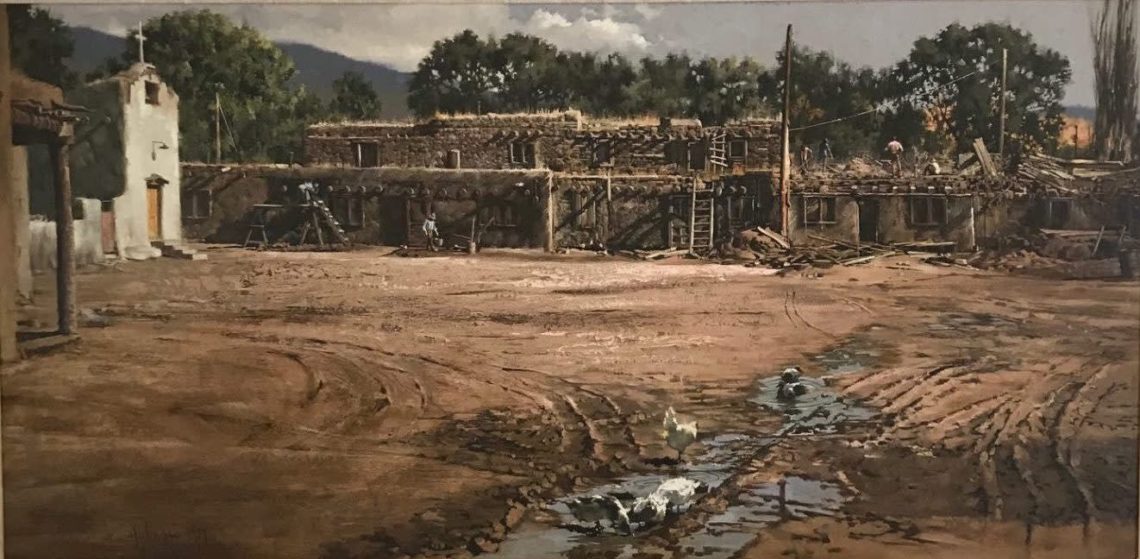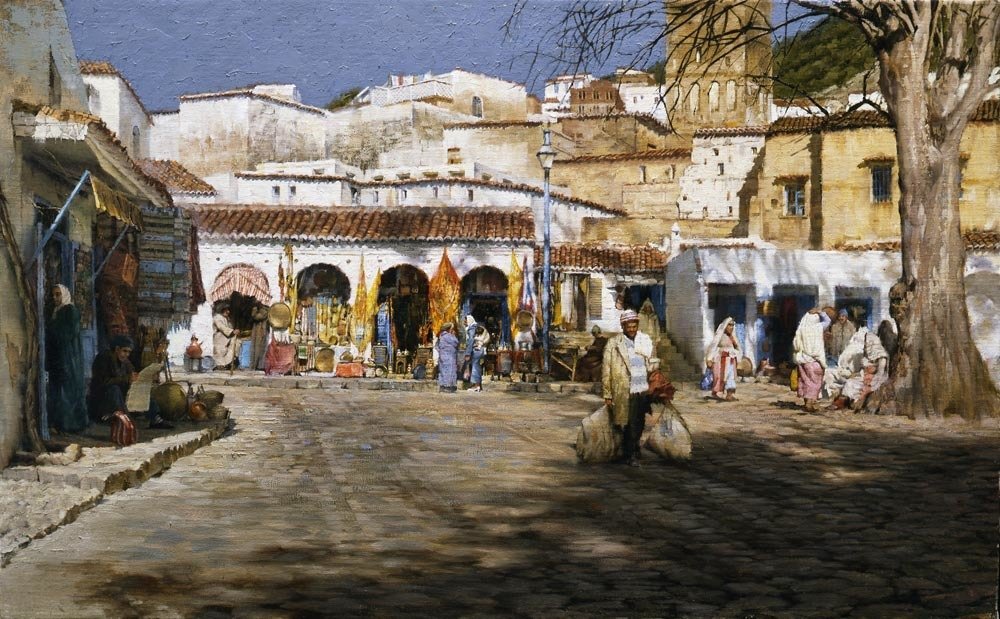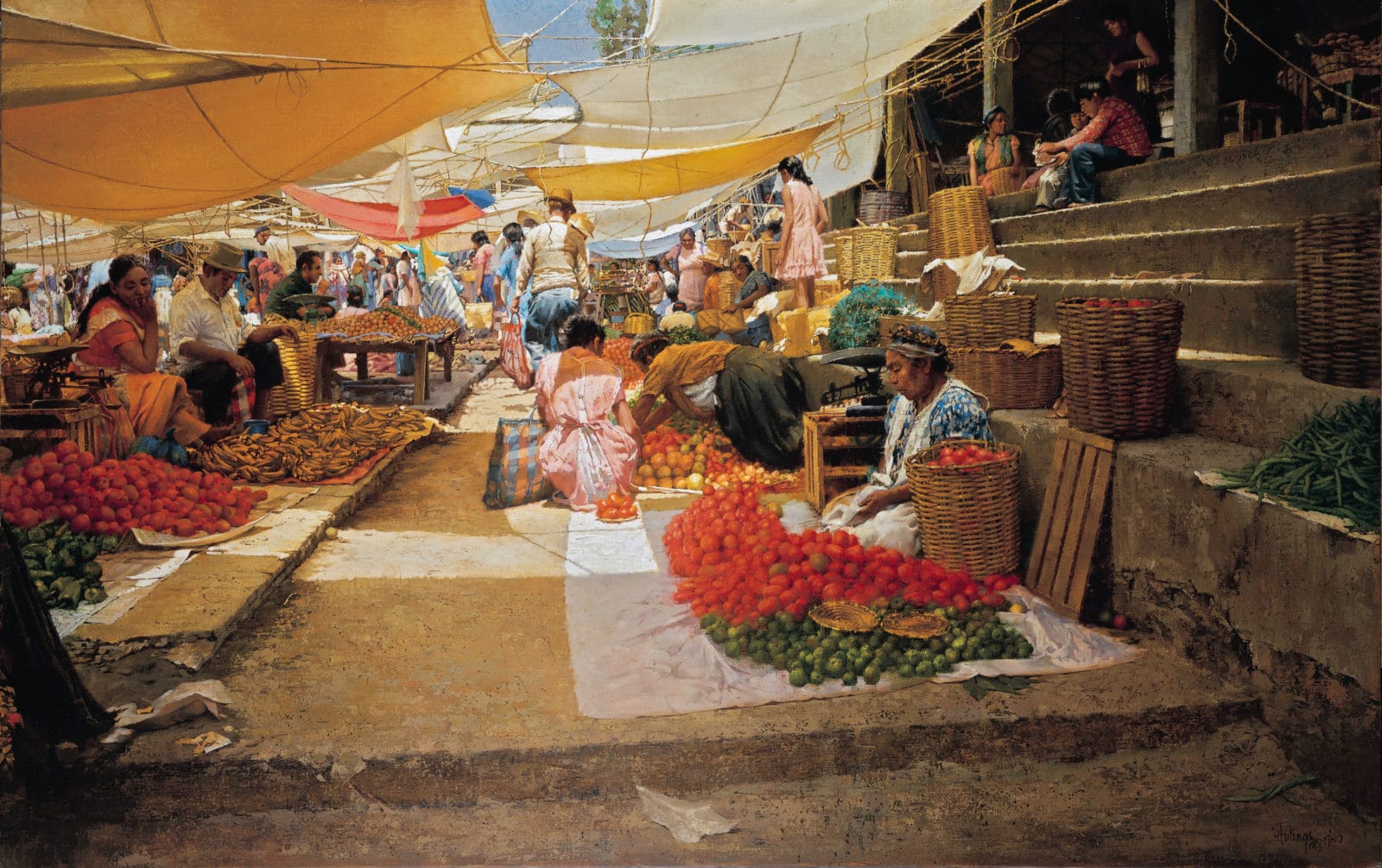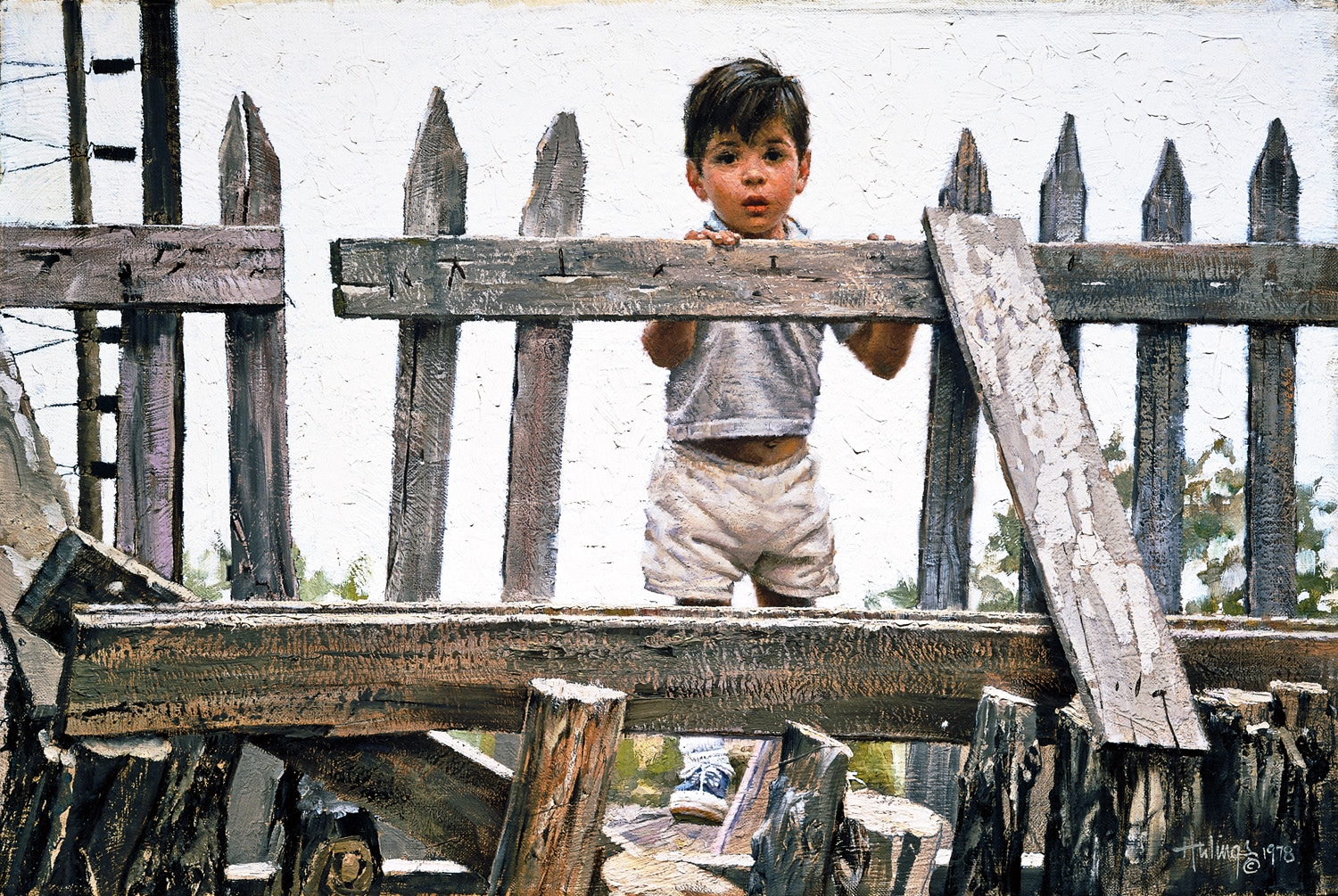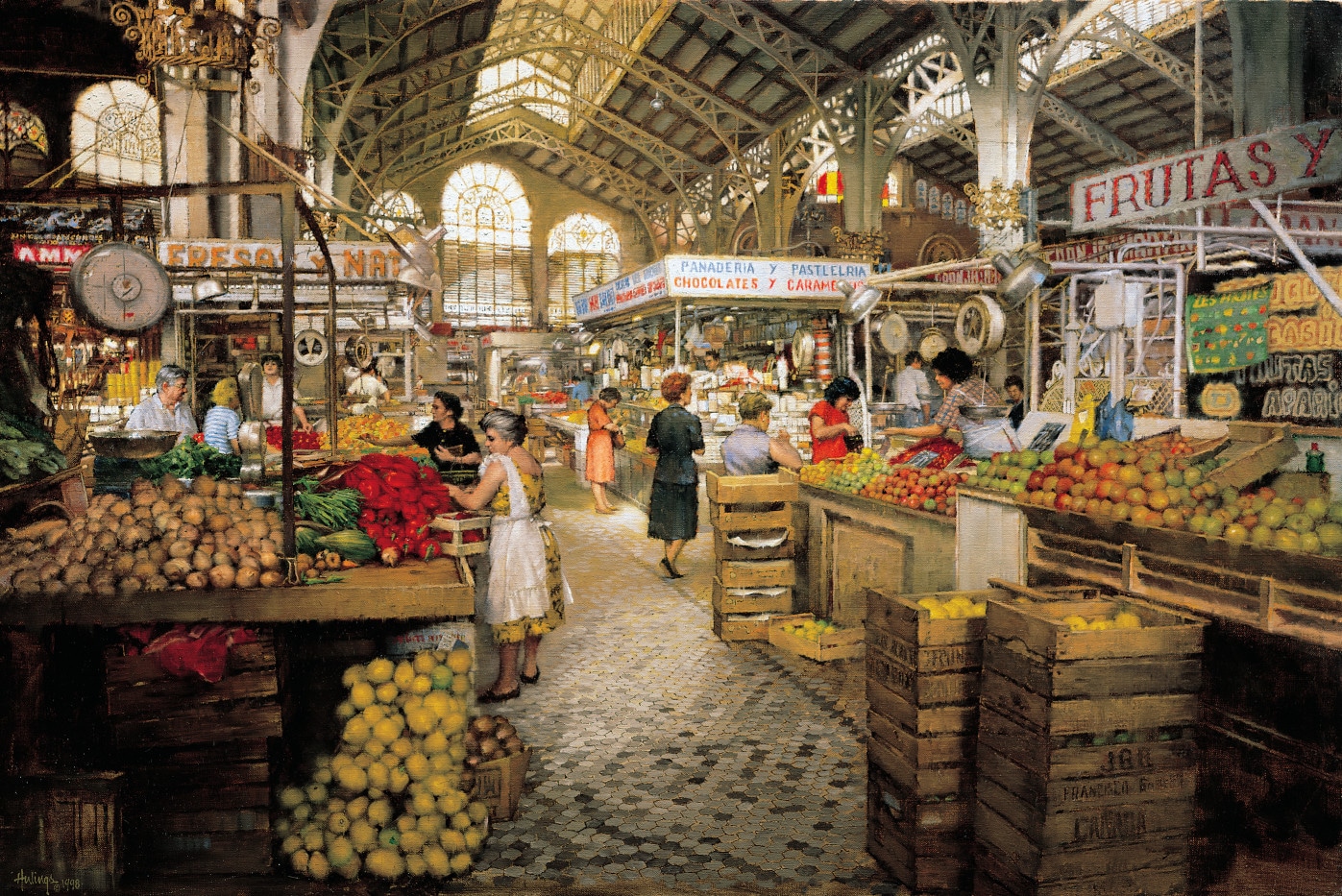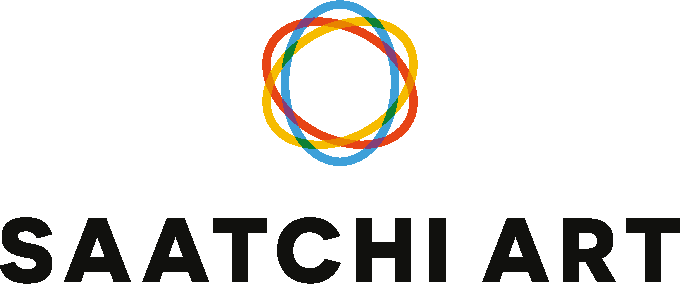“Hulings was invited to visit and celebrate Tesuque in paint: a rare honor for a non-Native artist.”
Tesuque Frieze is a fascinating painting; it’s an especially noteworthy example of Hulings’ technical prowess, as well as his characteristic fearlessness and sense of humor. Santa Fe, New Mexico is among the oldest cities in the US, but it’s a baby compared to the many Native American settlements that surround it. Case in point: Tesuque Pueblo just a few miles to the North. The Pueblo dates to 1200 AD and is on the National Register of Historic Places. It is not open to the public—even when making in-person visits would be possible in general—but Hulings was invited to visit and celebrate it in paint. A rare honor for a non-Native artist.
Museum Heritage
1974 was a peak time in Hulings’ career as an easel painter: this painting was exhibited at the National Cowboy & Western Heritage Museum (NAWA) in Oklahoma City, and that year also Hulings won the NAWA silver medal for a painting of a town a few miles further North. That work, Woodbearers of Chimayo, now hangs in the Tacoma Art Museum. (As a side-note, NAWA became famous on Twitter this year: their security guard, Tim, became a virtual guide to the museum, charmingly tweeting about the art while the museum was closed during the pandemic.)
Down to Earth
This painting is an unapologetic study of mud. Good old mud. No matter how high we build and how much we accomplish, there’s still mud to get stuck in—and conversely, mud to create the adobe bricks that build remarkable homes and communities. Although Hulings has so many works that are riots of bright color, he was never afraid of the reality of earth and a brown palette. In the foreground, an unglamorous set of puddles is a relaxing stop for a group of opportunistic birds, which include at least one white chicken and possibly a few ducks. The lines of the tire tracks are precisely-crafted, with just enough playfulness to look accidental.
Architects, Artists, and Artisans
Beyond the mud, things get even more intricate and sophisticated. Looking at the long adobe building that stretches across the background, we see why Hulings has “frieze” in his title. Often referring to a decorative band on a building that’s either painted or bas relief, we see the architecture has frieze-like elements above the doors and windows, and you could even say that the long landscape orientation of the 18 x 36″ painting makes the whole work look as if it could be a frieze. Tesuque Pueblo ceramics often feature geometric frieze patterns; the local artist and makers’ economy continues fine traditions of pottery, paintings, sculpture, silverwork, leather, and fabric.
Hulings’ Legacy
The Hulings connection to this community is ongoing. Our sister organization, The Clark Hulings Foundation for Visual Artists, is partnering with SWAIA to create a virtual version of Santa Fe Indian Market this year, so that Native artists from over 220 communities, including Tesuque, can earn a living even in the face of COVID19. Hulings was tireless in the pursuit of his artistic goals during his lifetime, and CHF advances his legacy by ensuring that today’s artists have the skills and resources to pursue theirs.
Scottsdale
Update: a lucky collector brought this stunning work home from the 2020 Scottsdale Art Auction! It’s a masterful painting to grace a new wall. Sending our congratulations to the new owner, and to the SAA team, who realized 10.5 million in sales and sold 93% of all lots this year.

